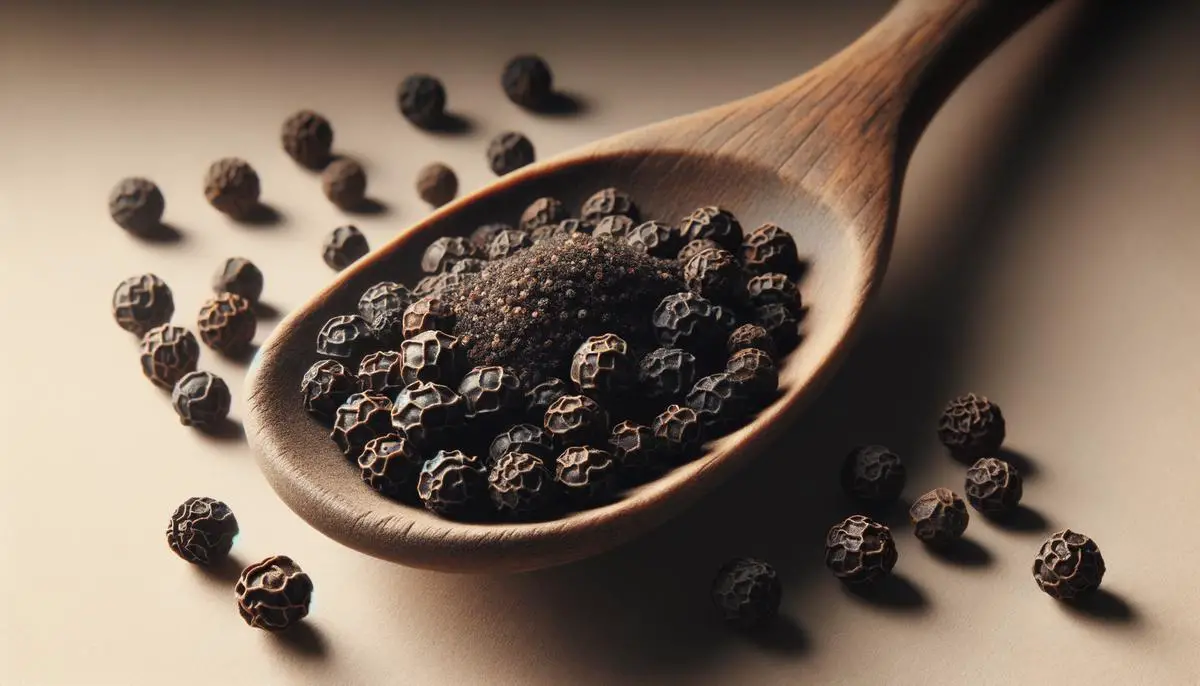
The Inevitable Pairing
Salt and pepper—the dynamic duo of dinner tables worldwide, a pair celebrated for their ability to elevate even the simplest meals into culinary delights. This quintessential coupling did not burst onto the culinary scene attached at the hip; rather, their alliance was forged over eras of socio-culinary evolution.
Salt's relentless journey through human civilization highlights its indispensable role. Beyond enhancing flavor, salt has been a cornerstone for preservation, paramount for survival before refrigeration. Mining from the earth and evaporating seawater formulated an intense economic backdrop, marking territories and trade routes, adding layers to its historical panorama.
Pepper walks a parallel story, once hailed as "black gold." It dictated not just flavor but also wealth and power from ancient tables in India to the Renaissance courts of Europe. Initially a luxury, pepper managed to percolate into more common pantries due to colonial expansion and burgeoning trade routes, firing up dishes with its pungent punch.
In the 17th century, French culinary pioneer Francois Pierre La Varenne revolutionized the game by nudging these two powerhouse spices side by side in his recipes. His influence was a testament to the evolving palate of the French aristocracy, particularly under King Louis XIV, known for his temperate taste buds requesting that spices should complement, not overpower, the natural flavors of food.
This pairing of salt and pepper heralded a new era in the culinary field, cementing their partnership on dinner tables worldwide. Salt elevates the inherent flavors of food while pepper adds a hint of intricacy with its slight heat and earthy tones. By striking a balance between simplicity and enhancement, salt and pepper allow chefs and home cooks to cater to a widened array of tastes, working synchronously to create a harmonized complexity.
Today, this pair graces most dining experiences, nearly mandated by culinary custom. Salt and pepper have established themselves as foundational seasoning elements, defining norms in kitchens and recipes at all levels. Their enduring relevance testifies to their time-tested utility and universal appeal in enlivening dishes across cuisines.
Salt's Flavorful Impact
Salt serves as more than just a seasoning; it is a culinary cornerstone, interacting with food on a chemical level to significantly enhance flavor. When added to food, salt doesn't just impart its own taste; it modifies other flavors, amplifying sweetness, suppressing bitterness, and enhancing the savory essence known as umami, making dishes more palatable and intricate. Chemically, sodium ions from salt help release molecules into the air, heightening a dish's aroma, a critical component of its taste.
Salt's importance extends into the domain of preservation. It draws out moisture from foods, inhibiting the growth of bacteria that cause spoilage. This drying effect, coupled with the creation of an unfavorable environment for microbes, makes salt an enduring preservative, underlining its historical significance before contemporary refrigeration technology.
From a dietary standpoint, adequate salt intake is vital for bodily function. Sodium plays pivotal roles in nerve impulse transmission, muscle contraction, and fluid balance within the body. This necessity underlines why it appears so profusely across all cuisines and recipes.
While excessive sodium intake has been linked to health issues, it remains an irreplaceable part of our diet, not only framing culinary flavors but also sustaining cellular processes. Thus, while moderation is key, salt's role in both cooking and human health cannot be overlooked, continuing to make it a key ingredient in kitchens worldwide.

Black Pepper's Bold Presence
Black pepper, known scientifically as Piper nigrum, originates from the Malabar Coast of India and is now renowned worldwide for its versatile zing. This spice, frequently ground into a fine dust, offers more than just a sharp bite; it introduces warmth and depth to dishes that is unparalleled. Most appreciated is its unique ability to draw out subtle flavors in foods, accentuating nuances that might otherwise go unnoticed.
The capacities of black pepper transcend the everyday sprinkle; pepper is integral to mixes and marinades where its pungency enhances meats and complements the sweetness of roasted vegetables. In global cuisines, black pepper is pivotal, from the peppercorn-crusted steaks favored in Western kitchens to the spicy warmth it brings to Indian masalas and richly seasoned Chinese stir-fries.
Chefs and home cooks alike prize black pepper for its flavor and also for its noted health benefits. Rich in antioxidants, black pepper assists in combating oxidative stress. It also helps in the absorption of other nutrients in the body, such as turmeric's curcumin, making it a spice that supports wellness as well as taste.
Despite these versatile applications, the significance of using pepper correctly cannot be overstated. Overuse can easily overwhelm the other flavors in a dish, while its growth on pepper vines highlights the environmental sensitivity of quality spice production, linking culinary arts closely with sustainable practices.
Finally, while frequently paired with salt, black pepper earns distinctive praise for its bold presence. The bravado it adds to dishes across countless cultures solidifies its status as an essential component of any spice cabinet, underlining its widespread adoption and enduring appeal.

Culinary Uses and Techniques
Salt and pepper feature prominently in various culinary techniques, each playing a significant role in amplifying the essence of ingredients and transforming dishes from simple to splendid.
Seasoning: The primary role of salt in cooking is to enhance flavor. It is crucial not to add salt too early during cooking, especially when using dry heat methods, as it can draw out moisture from ingredients, potentially leading to a drier texture. For instance, when grilling or roasting meat, applying salt just before cooking helps retain juices. On the other hand, pepper should be added near the end of cooking, as heat can dissipate its volatile aromatics, lessening its pungency and flavor. By sprinkling ground black pepper on dishes right before serving, its distinct bite remains robust.
Marinating: Salt plays a crucial role in marinades. When combined with liquids and herbs, it aids in tenderizing meat by breaking down proteins, allowing the flavors from herbs and spices, such as black pepper, to permeate more deeply. A reasonable approach is to create balanced marinades that consider both the tenderizing power of salt and the flavor enhancement from black pepper. These are ideal for less tender cuts of meat or robust vegetables like eggplant.
Finishing: Both salt and pepper can act as finishing spices that add a touch of elegance and flavor just before dishes are served. For example, a light sprinkle of flaky sea salt and freshly cracked pepper on a Risotto just before serving can enrich its creamy flavor and add textural contrast. In delicate desserts, like chocolate truffles, a hint of fine sea salt can intensify the cocoa flavors immensely while a pinch of finely ground pepper could magnify this effect.
Achieving balance with salt and pepper is essential; too much salt can overpower natural flavors, while an excess of pepper might introduce an undesirable spiciness. A beneficial practice is to season incrementally, tasting frequently during cooking. Utilize salt and pepper as layers of flavor and nuances that underscore and heighten the natural profiles of the original ingredients.
With thoughtful application, these timeless condiments provide more than just taste; they offer distinct dimensions to culinary creations, building layer upon subtle layer of flavor that turns ordinary meals into memorable experiences.

Recipe: Classic Salt and Pepper Chicken
Ingredients:
- 4 boneless, skinless chicken breasts
- 1 tablespoon salt
- 2 teaspoons freshly ground black pepper
- 1 cup all-purpose flour
- 2 large eggs, beaten
- 2 cups panko breadcrumbs
- Vegetable oil for frying
Instructions:
- Begin by cutting the chicken breasts into 1-inch thick strips.
- Season the chicken strips generously with salt and black pepper. Ensure each piece is evenly coated. Let them marinate for at least 30 minutes in the refrigerator.
- Prepare for dredging by placing flour in one shallow dish, beaten eggs in a second dish, and panko breadcrumbs in a third dish.
- Heat a large skillet over medium-high heat and add enough vegetable oil to cover the bottom by about 2 inches. Allow the oil to reach a temperature of about 350°F (175°C) using a cooking thermometer.
- Remove the chicken from the refrigerator. Dredge each strip first in the flour, shaking off any excess, then dip in the beaten eggs, and finally coat thoroughly with panko breadcrumbs.
- Carefully lower a few pieces of the breaded chicken into the hot oil using tongs. Fry the chicken until golden brown and crispy, about 3-4 minutes per side. Avoid overcrowding the pan to maintain the oil temperature.
- Transfer fried chicken to a wire rack set over a baking sheet to drain any excess oil.
- Once all the chicken is fried, sprinkle a little extra salt and black pepper over the chicken to taste.
- Serve immediately. This dish pairs excellently with a simple side of steamed vegetables or a light salad.
Nutritional information per serving (1/4 of recipe):
- Calories: 485 kcal
- Carbohydrates: 34 g
- Protein: 45 g
- Fat: 18 g
- Saturated Fat: 3 g
- Cholesterol: 190 mg
- Sodium: 1840 mg
- Fiber: 2 g
- Sugar: 1 g
In this recipe, salt is utilized not only to season the chicken but also to draw out moisture, enhancing the meat's flavor and aiding in achieving a crisper fry. Black pepper adds a gentle heat and depth, balancing the salt's potent effect by providing a subtle pungency that complements the chicken's natural flavors.

- Kurlansky M. Salt: A World History. New York, NY: Penguin Books; 2003.
- McGee H. On Food and Cooking: The Science and Lore of the Kitchen. New York, NY: Scribner; 2004.
- Norman J. Herbs & Spices: The Cook's Reference. New York, NY: DK Publishing; 2015.
- U.S. Department of Health and Human Services. Dietary Guidelines for Americans, 2020-2025. 9th Edition. December 2020.
- Yashin A, Yashin Y, Xia X, Nemzer B. Antioxidant activity of spices and their impact on human health: A review. Antioxidants (Basel). 2017;6(3):70.



